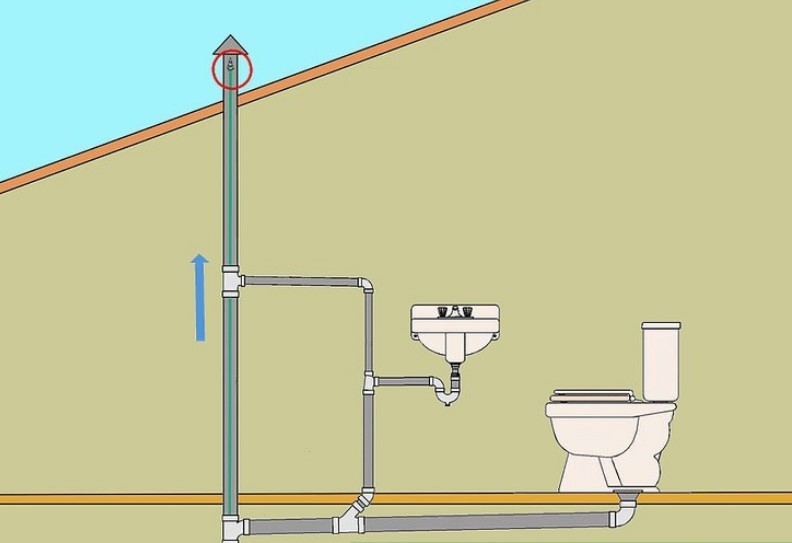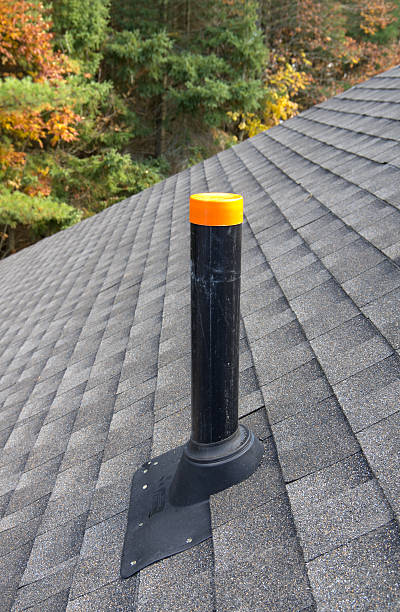How do you feel in relation to The Upsides of Proper Ventilation in Plumbing Design?

Appropriate ventilation in pipes systems is typically overlooked, yet it is vital for preserving the capability and safety of your home's plumbing. Air flow assists manage air pressure, protect against the build-up of hazardous gases, and make certain the effective removal of waste. In this guide, we will certainly check out the significance of appropriate pipes air flow, just how it functions, and the advantages it offers your pipes system.
Understanding Ventilation in Pipes
Air flow in pipes refers to the network of pipes that allow air to flow through the water drainage system. These vents serve several purposes, consisting of managing air pressure within the pipelines, stopping sewage system gases from going into the home, and assisting in the smooth flow of wastewater.
Exactly How Air Flow Works in Pipes Equipments
Air Pressure Guideline
Appropriate ventilation preserves balanced atmospheric pressure within the pipes system. When water flows with pipes, it displaces air. Without adequate air flow, this displacement can produce adverse pressure, leading to slow down drains pipes or siphoning of water from catches, which can cause undesirable smells to seep into the home.
Preventing Sewer Gas Build-up
One of the most vital functions of pipes vents is to stop sewer gases, such as methane and hydrogen sulfide, from collecting within the home. These gases can posture significant health and wellness threats and are highly flammable. Vent pipes permit these gases to leave securely outdoors.
Helping in Waste Elimination
Ventilation aids in the effective removal of wastewater by preventing airlocks in the water drainage system. When air can move easily with the vents, it allows water and waste to flow efficiently with the pipes, reducing the threat of clogs and back-ups.
Kinds Of Plumbing Vents
Key Stack Vent
The main pile vent, additionally called the vent pile, is the main air vent in a plumbing system. It expands from the main drainpipe line up via the roofing, permitting gases to run away and fresh air to get in the system.
Branch Vent
Branch vents attach to the primary pile air vent and serve private components, such as sinks, commodes, and showers. These vents guarantee that each component has ample ventilation to work properly.
Air Admittance Shutoff (AAV).
An Air Admittance Shutoff (AAV) is a one-way valve that permits air to get in the pipes system without the need for a traditional vent pipe extending through the roof covering. AAVs are generally made use of in renovations or locations where mounting a typical air vent is unwise.
Signs of Poor Air Flow in Pipes.
Slow Draining Fixtures.
If your sinks, tubs, or commodes are draining slowly, maybe an indicator of inadequate ventilation. Insufficient air flow can create a vacuum cleaner impact, making it challenging for water to drain correctly.
Gurgling Sounds.
Gurgling sounds coming from drains pipes are typically an outcome of air being drawn via water catches because of adverse stress in the pipes. This is a clear indicator of not enough ventilation.
Undesirable Smells.
Drain smells inside your home are a red flag that your plumbing system is not effectively ventilated. This could suggest that sewage system gases are not being appropriately aired vent outside, causing possibly unsafe problems.
Usual Air Flow Blunders.
Insufficient Vent Sizing.
Utilizing undersized vent pipelines can lead to poor air flow and pressure discrepancies in the system. It's vital to make use of vents that satisfy the details demands of your plumbing system.
Improper Vent Positioning.
Positioning vents also far from the fixtures they offer can lower their performance. Appropriate positioning makes sure that air can flow openly and effectively via the system.
Disregarding Code Demands.
Building ordinance offer particular guidelines for plumbing ventilation. Neglecting these codes can lead to a system that fails to operate appropriately and may lead to expensive repair work or carcinogen.
Benefits of Correct Air Flow.
Improved System Efficiency.
Effectively ventilated pipes systems run more successfully, with fewer blockages, faster draining, and much less pressure on the pipelines. This performance extends the lifespan of the plumbing system.
Improved Air High Quality.
By protecting against sewage system gases from entering your home, correct air flow contributes to much better interior air quality, making your living environment healthier and much more comfortable.
Stopping Water Damage.
Appropriate ventilation helps stop water from being siphoned out of catches, which can cause sewage system gases going into the home and creating water damages in time.
Actions to Make Certain Appropriate Air Flow.
Consulting Pipes Codes.
Always seek advice from local pipes codes when creating or changing your pipes system. These codes supply the required standards for appropriate airing vent and ensure your system fulfills safety and security requirements.
Normal Evaluation and Maintenance.
Routine assessments can assist identify potential ventilation concerns before they come to be major problems. Maintenance jobs, such as cleaning up vent pipelines and looking for obstructions, are important for keeping the system in good working order.
Professional Installment.
For new setups or major alterations, it's smart to hire an expert plumber. They have the knowledge to make sure the air flow system is correctly designed and installed according to code.
Final thought.
Appropriate ventilation is an important component of any plumbing system, making certain that it functions efficiently and securely. By comprehending the significance of ventilation, recognizing the indications of bad ventilation, and taking actions to maintain your system, you can protect against costly issues and shield your home's air quality.
What is a Plumbing Vent and it's used for?
All plumbing systems in residential and commercials construction have a plumbing vent. It doesn’t just vent unwanted odors from the drainage system to the outside; it actually serves an important purpose by supplying air to the system.
The plumbing drainage system is actually called a drainage, waste and vent (DWV) system. When water flows down the piping, an air supply (vent) is needed to allow the water to flow. Think of the vertical pipe as a drinking straw. If you plug the top end of a straw, liquid won’t drain from it.
The DWV system in your building consists of a series of pipes connected to each fixture; they extend above each fixture, and the system terminates at an open pipe that extends through the roof. This piping allows air into the system and prevents unbalanced pressures in the piping.
?The vent also prevents the system from drawing water out of a trap at the fixture with the characteristic “glug-glug-glug” as the drain gasps for air. Plumbing traps should drain smoothly and never “glug” or gasp for air.
If you have a drain that empties slowly or gurgles as it drains, this may indicate a venting problem. If you flush a toilet and the sink gurgles, there’s definitely a vent problem. It is good idea to have a Plumber check this.
https://www.ameliashomeinspection.com/blog/what-is-a-plumbing-vent-and-its-used-for

I have been very focused on The Upsides of Proper Ventilation in Plumbing Design and I am assuming you liked our blog posting. Do you know about anybody else who is serious about the niche? Why not share it. Thank you so much for your time spent reading it.
Get Started
Comments on “The Role of Correct Ventilation in Ensuring Plumbing Systems”